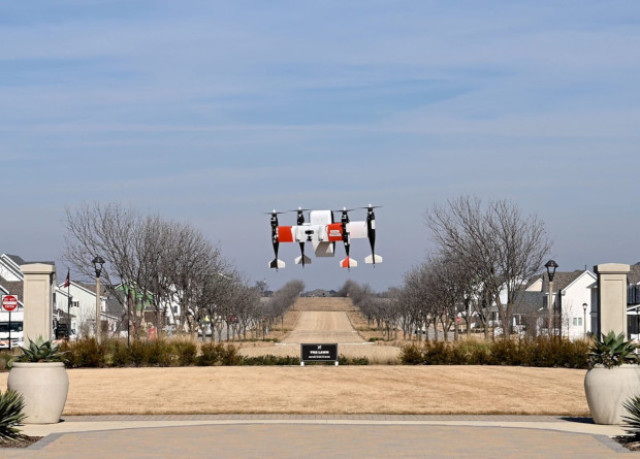American companies Hillwood and Bell Helicopter have tested a promising cargo unmanned tailsitter APT 70 cargo delivery. According to Bell, the tests were conducted at the AllianceTexas innovation center in North Texas. The device in a fully autonomous mode delivered the cargo to the designated point. The tests were considered successful.
The APT 70 consists of four small aircraft fuselages with electric motors and propellers, combined with two wings and two stabilizers. Between the latter, a streamlined cargo capsule is installed, in which cargo weighing up to 31.8 kilograms can be placed. The device is capable of performing vertical take-off and landing on the tail.
In flight, the drone goes into a horizontal flight in an airplane. Thanks to this, it can make fast flights at speeds of up to 160 kilometers per hour between specified points, consuming less battery power than if the device was made by a conventional multicopter.
During a test flight at the AllianceTexas innovation center, the APT 70 drone took off in fully automatic mode, switched to airplane flight mode, flew along a given route, and then made a vertical landing at a given point. In flight, the device rose to a height of 91 meters. The device flew through the air spaces of class D and G.
Other details about the tests of the unmanned tailsitter were not disclosed. The data obtained during the tests, Bell Helicopter plans to use for the certification of APT 70 in accordance with the requirements of the Federal Aviation Administration of the United States.
Last fall, Bell Helicopter tested the APT 70 with a mid-air collision avoidance system installed on it. This system, developed by Xwing, includes a radar station, a set of cameras, and a transponder of the automatic dependent surveillance-broadcast system (ADS-B, ADS-B). All data from this system in flight is transmitted to the operator's control station.
Vasily Sychev

